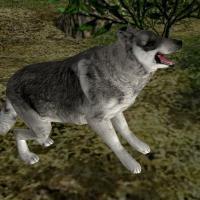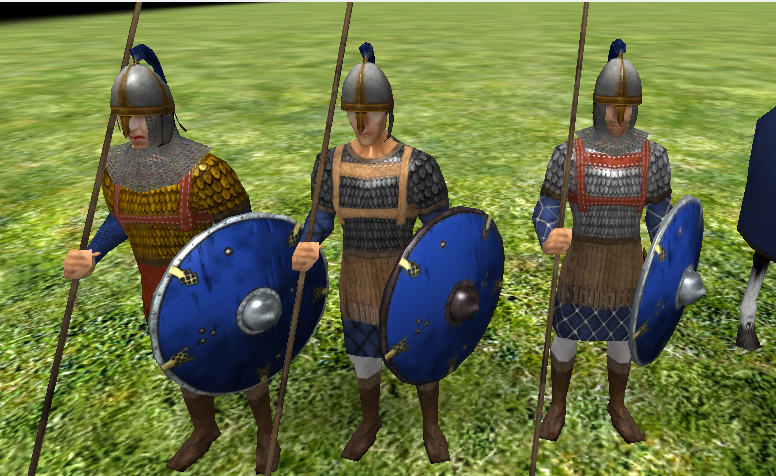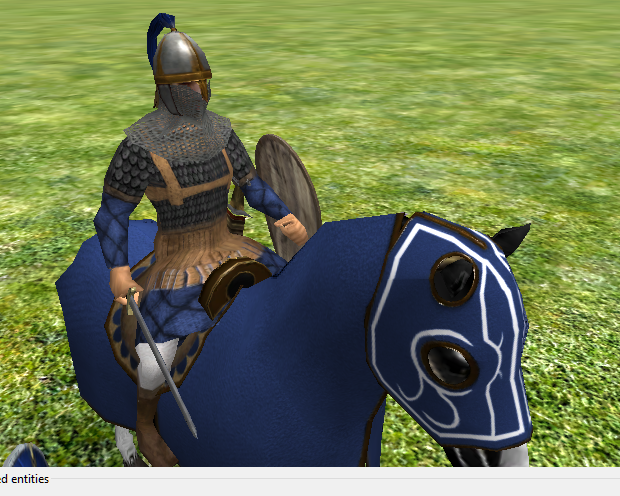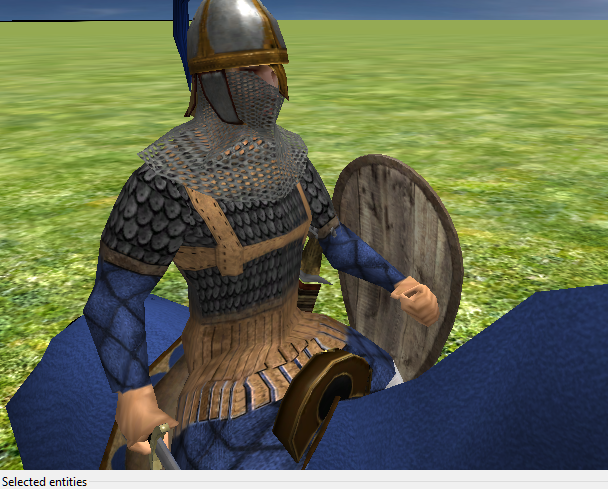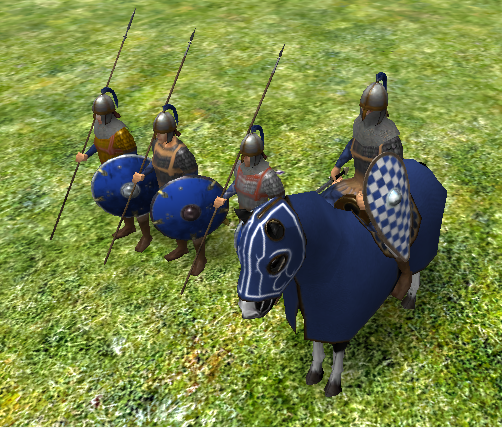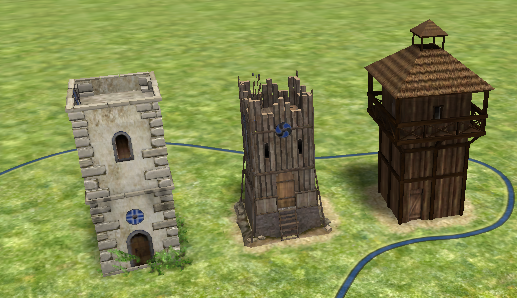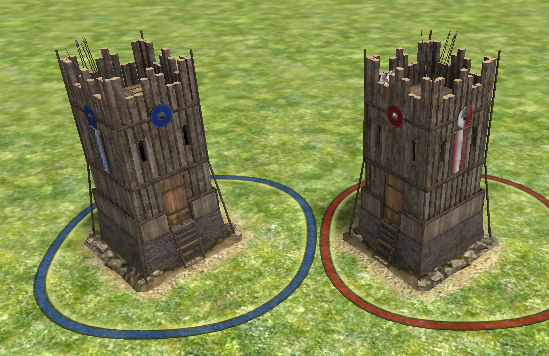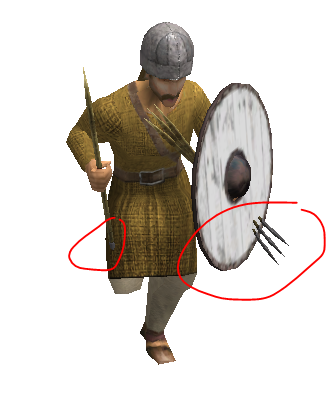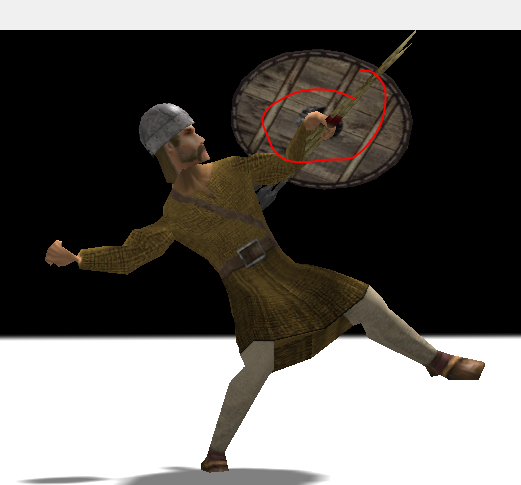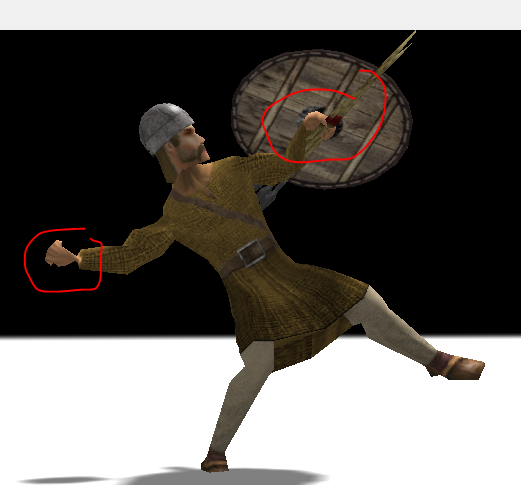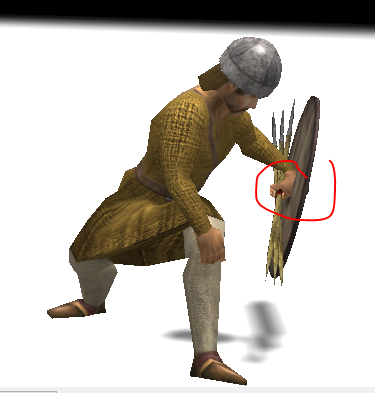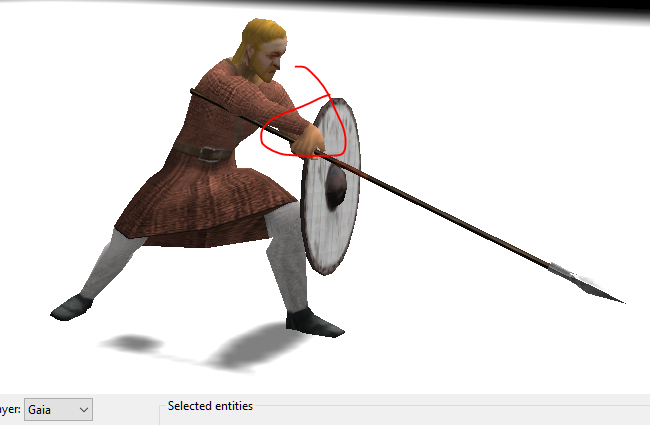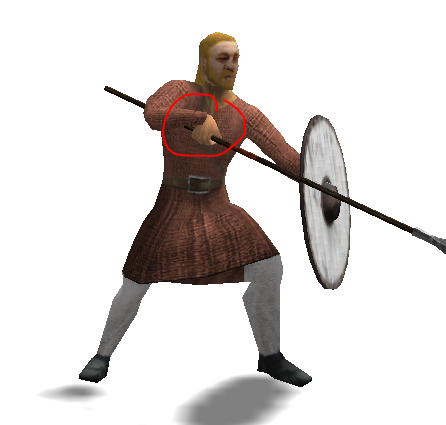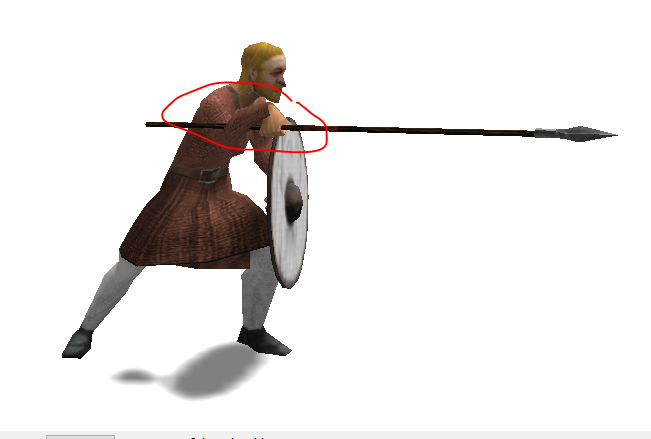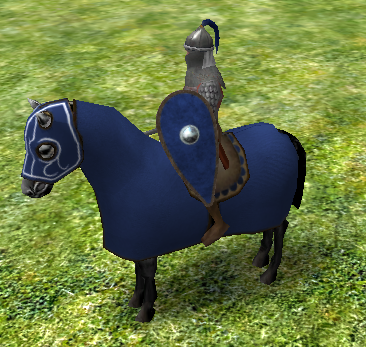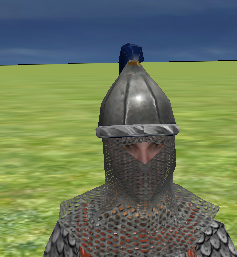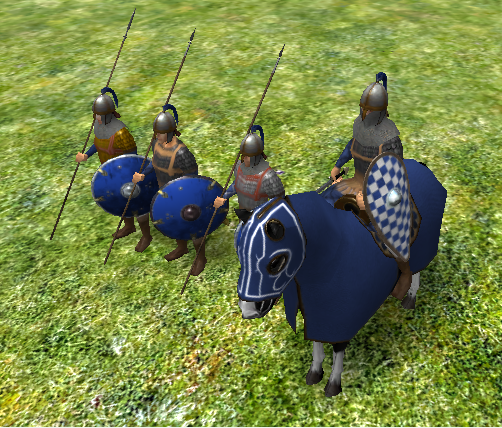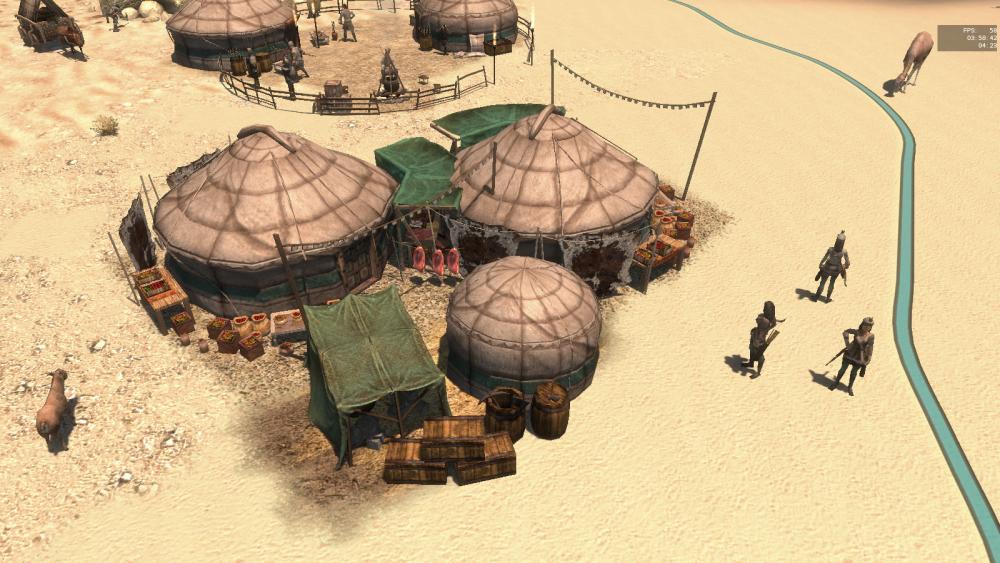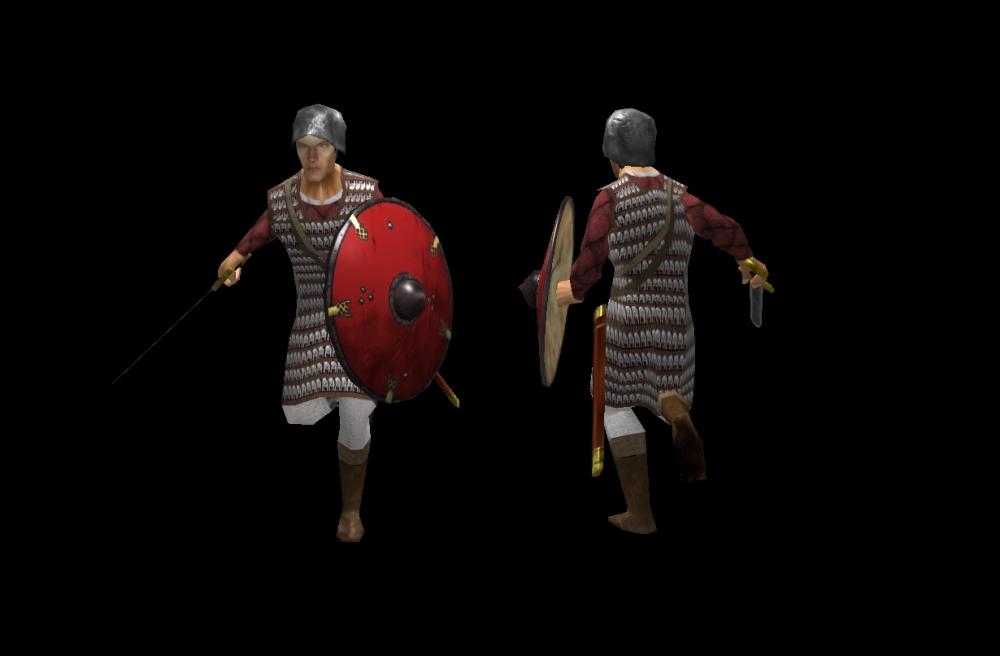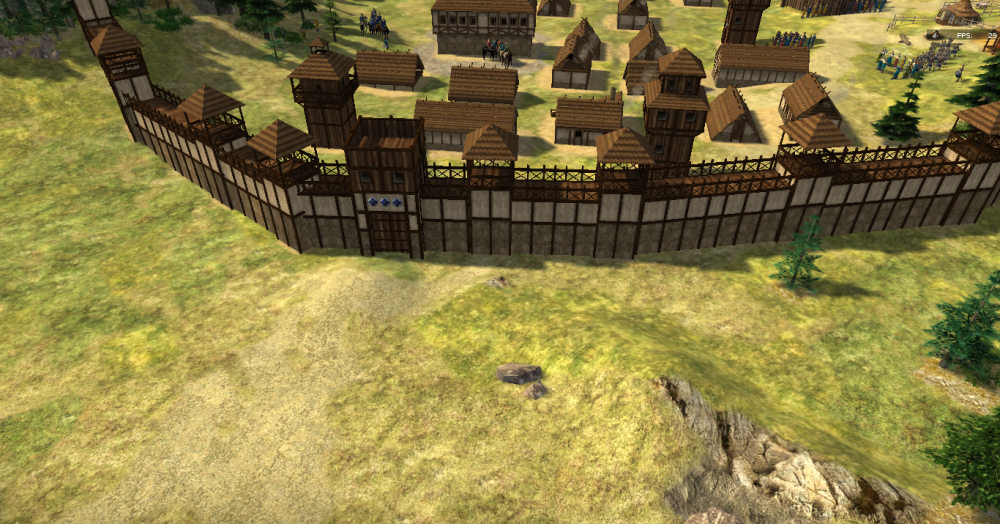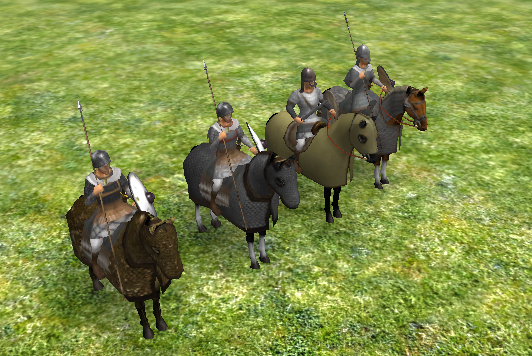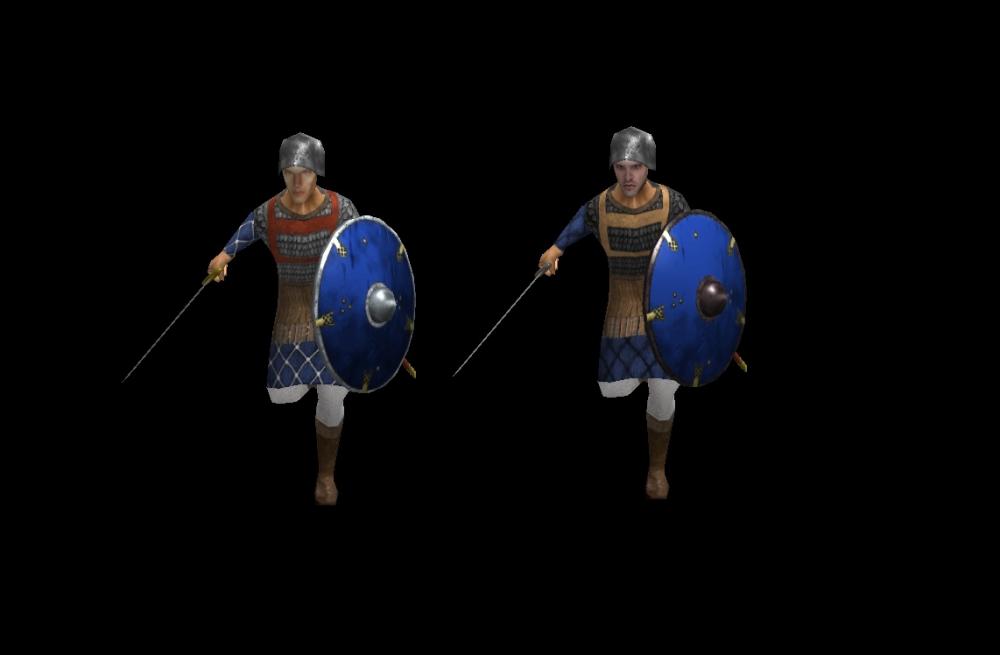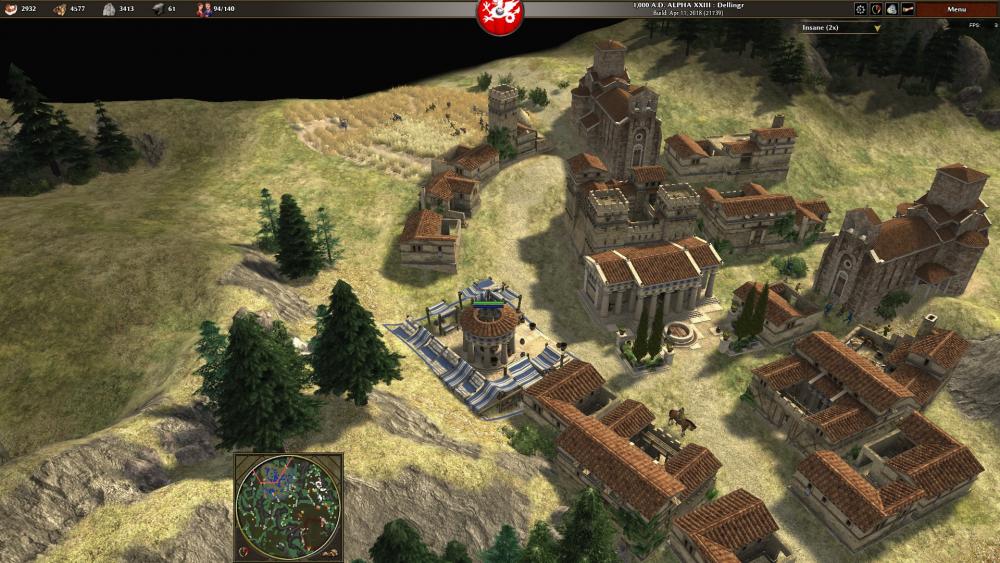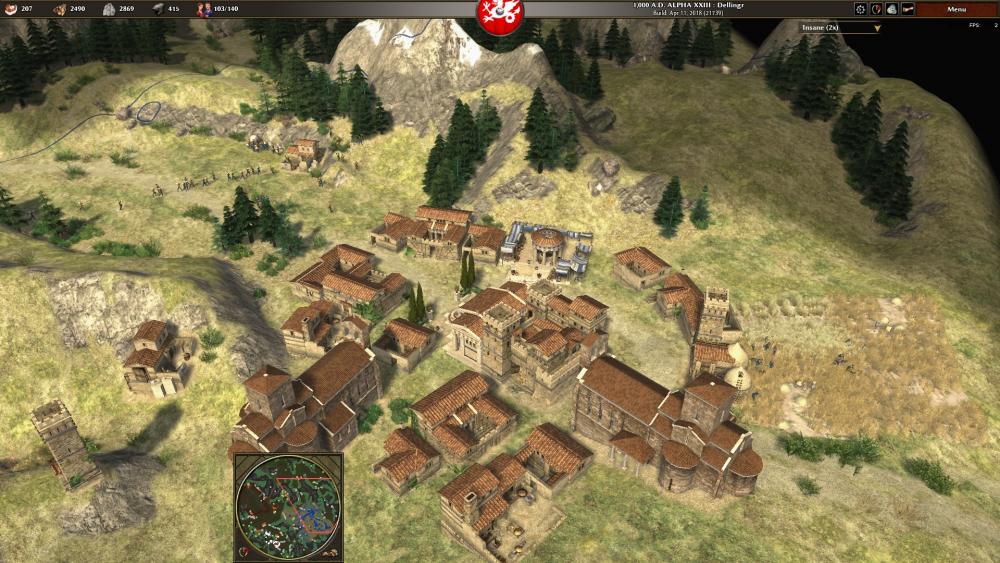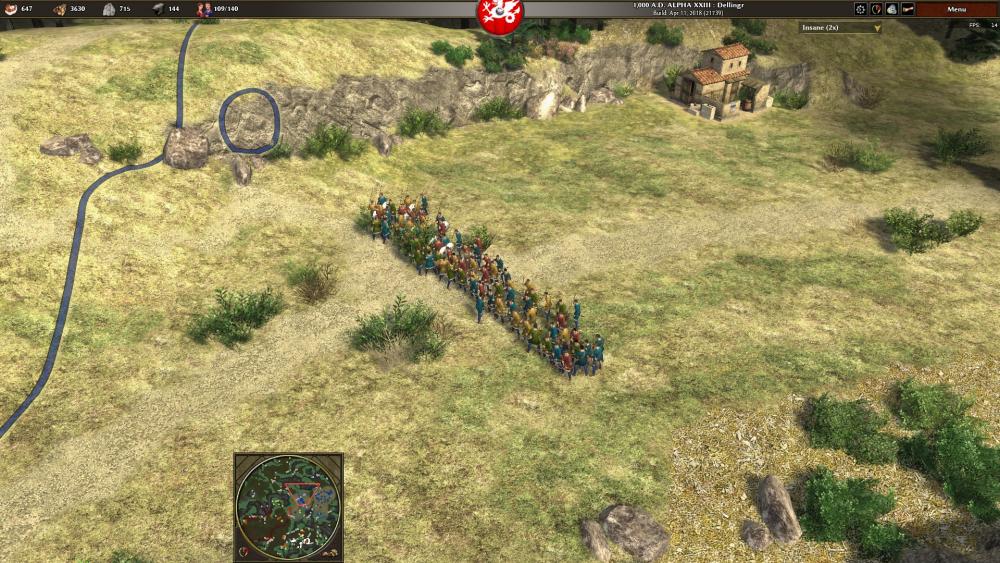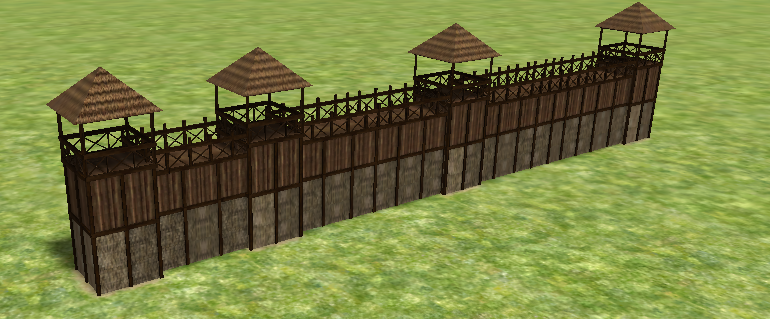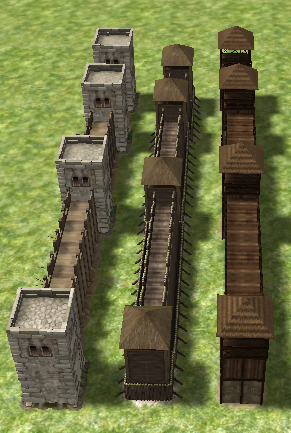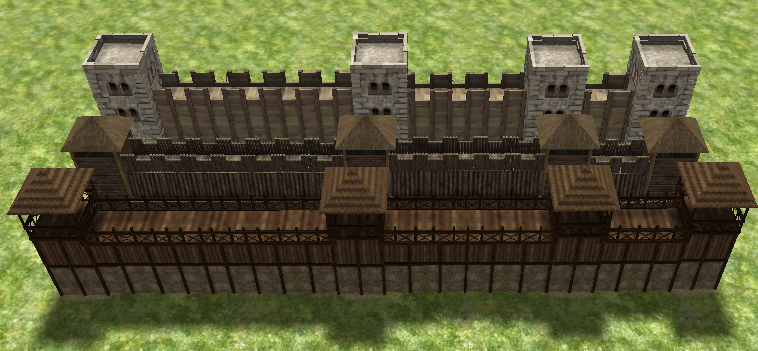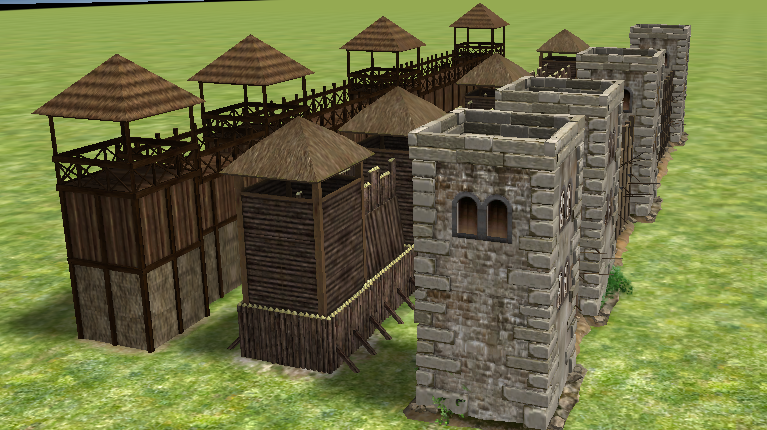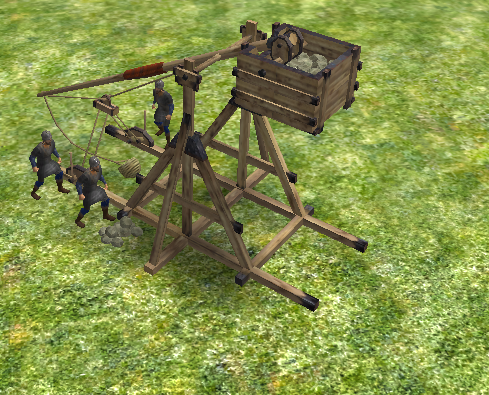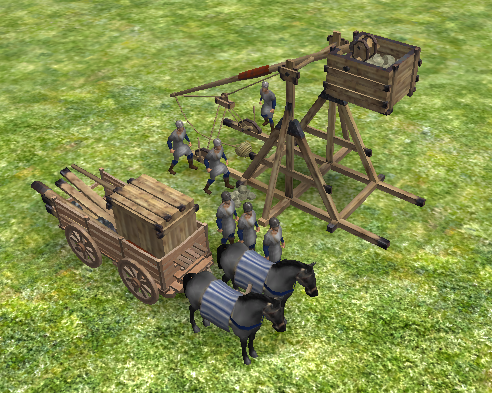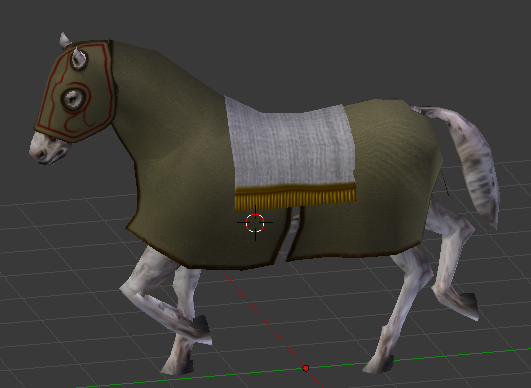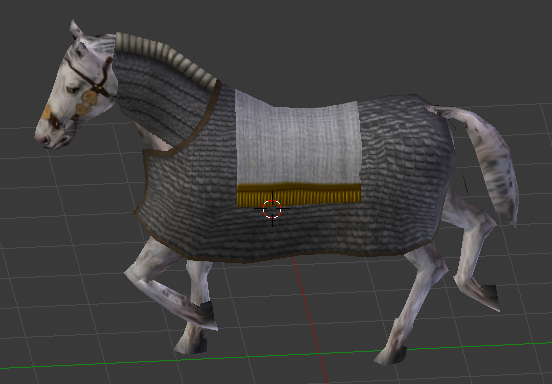Leaderboard
Popular Content
Showing content with the highest reputation on 2018-04-26 in all areas
-
7 points
-
Cavalry animations are already fixed, courtesy of @Alexandermb you should see them in the upcoming release4 points
-
3 points
-
3 points
-
3 points
-
I don't know about that chainmail texture, chainmail is fairly dense.That's an interesting effect though2 points
-
2 points
-
The carolingian texture pack needs some work, hate to see you struggle with it when some texture wrenching will make these and future buildings much easier2 points
-
Remember the armature is not exactly like the human skeleton and won't behave as that, the actual animations enrique did had some inconsistencys too not because they are intentionally added, but because they are being made in general for an amount of props wich have several sizes, lenghts or width including also that the fightings animations can't be 100% real because any 1 vs 1 fight includes specific techniques for defending and attacking, if i stab the enemy he will use the shield for avoid being stabbed but thats not the case in 0 AD because the game doesn't have a blocking function to avoid being hitted nor they will wait until the enemy hit to react, the game is just a couple of guys stabbing or slashing the air. The main objective from an RTS combat animations wich doesn't exactly allow a first person perspective of the battle scene is to make the combat beauty from afar ie; fast cuts, strong stabs, exagerated reactions, all of that from the game perspective like AoE so yes they will end being with injuries or wrong armature behavior but not because they are intentionally added, but because the game is made from a performance perspective so anyone can enjoy whitout having a powerfull pc just like AoE and that means a basic armature whitout having exactly all the amount of bones of the human body or the files will end being like 30 mb per animation or 15, having a low poly body mesh wich will also behave wrong because the limited amount of vertex won't gonna imitate the same body musculature behavior. For having that illusion of real body animations it will need a full armature just like the ones used for Dark Souls or Skyrim wich have bones for every zone of the mesh including skirts, tails, wings shoulders, ankles, wrist, hand, fingers.1 point
-
1 point
-
1 point
-
1 point
-
I guess I should play a multi-player game before commenting next time haha. Having to manually adjust ports threw me off. Can't wait. Sounds like I discovered this game at the right time. Looking forward to it. Wish I had a programming background because I'd love to contribute on a project like this.1 point
-
1 point
-
1 point
-
1 point
-
1 point
-
emporium refers to a trading post, factory, or market of Classical antiquity, derived from the Ancient Greek: ἐμπόριον, translit. (empórion), which becomes Latin: emporium. The plural is emporia in both languages, although in Greek the plural undergoes a semantic shift to mean "merchandise". [1] Famous emporia include Sais, where Solon went to acquire the knowledge of Egypt; Elim, where Hatshepsut kept her Red Sea fleet; Elat, where Thebes was supplied with mortuary materials, linen, bitumen, naphtha, frankincense, myrrh and carved stone amulets from Palestine, Canaan, Aram, Lebanon, Ammon, Hazor, Moab, Edom, Punt and the Arabian Peninsula from Petra to Midian; and Olbia, which exported cereals, fish and slaves. Emporia functioned much like European trading colonies in China. In the Hellenic and Ptolemaic realm, emporia included the various Greek, Phoenician, Egyptian and other city-states and trading posts in the circum-Mediterranean area. Among these commercial hubs were cities like Avaris and Syene in Lower Egypt, Thebes in Upper Egypt, and Opone, Elim, Elat and other Red Sea ports. For the Hittites, it encompassed Kanesh and Kadesh. For Phoenicia, it included Cádiz, Carthage, Leptis Magna, and Cyrene, among others (although Cyrene had been founded by Greeks). Ampurias, also known as Empúries (Greek: Ἐμπόριον, Catalan: Empúries [əmˈpuɾiəs], Spanish: Ampurias [amˈpuɾjas]), was a town on the Mediterranean coast of the Catalan comarca of Alt Empordà in Catalonia, Spain. It was founded in 575 BC by Greek colonists from Phocaea with the name of Ἐμπόριον (Emporion, meaning "trading place", cf. emporion). It was later occupied by the Romans (Latin: Emporiæ), but in the Early Middle Ages, when its exposed coastal position left it open to marauders, the town was abandoned. The ruins are midway between the Costa Brava town of L'Escala and the tiny village of Sant Martí d'Empúries. There are good car parking facilities and the site may be reached by a traffic-free coastal walk from L'Escala. https://en.wikipedia.org/wiki/Empúries1 point
-
1 point
-
The Byzantines fielded various types of light cavalry to complement their Kataphraktos, in much the same way as the Romans employed auxiliary light infantry to augment their armoured infantry legionaries. Due to the empire's long experience, they were wary of relying too much upon foreign auxiliaries or mercenaries (with the notable exception of the Varangian Guard). Imperial armies usually comprised mainly citizens and loyal subjects. The decline of the Byzantine military during the 11th century is parallel to the decline of the peasant-soldier, which led to the increased use of unreliable mercenaries. Light cavalry were primarily used for scouting, skirmishing and screening against enemy scouts and skirmishers. They were also useful for chasing enemy light cavalry, who were too fast for the Cataphracts. Light cavalry were more specialized than the Cataphracts, being either archers and horse slingers (psiloi hippeutes) or lancers and mounted Javelineers. The types of light cavalry used, their weapons, armour and equipment and their origins, varied depending upon the time and circumstances. In the 10th century military treatise On Skirmishing explicit mention is made of Expilatores, a Latin word which meant "robber" or "plunderer" but which is used to define a type of mounted scout or light raider. Also mentioned in descriptions of army- or thematic-level light cavalry are trapezites, "those whom the Armenians call tasinarioi", who "should be sent out constantly to charge down on the lands of the enemy, cause harm and ravage them." [3] Indeed, the word tasinarioi may be the linguistic ancestor to the modern word Hussar. If the need for light cavalry became great enough, Constantinople would raise additional Toxotai, provide them with mounts and train them as Hippo-toxotai. When they did employ foreign light horsemen, the Byzantines preferred to recruit from steppe nomad tribes such as the Sarmatians, Scythians, Pechenegs, Khazars or Cumans. On occasion, they recruited from their enemies, such as the Bulgars, Avars, Magyars or Seljuk Turks. The Armenians were also noted for their light horsemen, the tasinarioi.1 point
-
Hey all, I recently discovered this game last week when browsing YouTube. I was very impressed with the overall mission of the game and the fact that it's open-sourced, community-based, and free to play. Just wanted to give my two cents regarding my experiences thus far. The good things: I love the time period the game takes place in as well as the historical accuracy. The attention to detail down to the artwork and translations is amazing. I also like the uniqueness of military units that perform economic tasks as I have not seen this in previous RTS games. I also enjoy the scaling (e.g the size of the triremes relative to the infantry) and the attack animations (zooming in on phalanx is awesome). Things to improve: Obviously this is a work in progress and there's still much room to improve. The one thing that irritates me so far is the way the units move; it seems choppy and unnaturally fast, especially the cavalry. The animation during their movement also appears unnatural; they look more like insects scuttling over the map than galloping horses (watch AOE 2 cavalry running for a comparison). I have read the planned change logs and know that trampling will be worked on in the future, but I hope they also improve the unit speed and animations. A central lobby for multiplayer will obviously be a huge addition as well. The only shame with such a community base is there are relatively few people working on it and I know any changes take time. Anyway, really love the work so far. I know that the next release is supposed to happen too as well as a mod service and look forward to the upgrades and improvements.1 point
-
1 point
-
1 point
-
Others potentials that I see to mod.io: Now, balance changes are made only release to release. WFG could endorse and publicity a pyromod that contains the official balance changes in the mod.io frontpage and main 0 a.d page. Only stats tweaks and numbers, but no changes that needs some new features. - Could the game "force" to install a pyromod when entering the lobby (your balance changes mod) Another nice feature would be that if you enter into a room that needs a mod, you could be redirected to install the specific mod, then restart the game, initialize the mod, and then auto enter the room.1 point
-
1 point
-
1 point
-
To gain an understanding of the Byzantine army and its constant changes in the Medieval Age, the Army will be split into Early, Thematic and Byzantine Armies. However there are similar overlaping themes. As with most medieval armies, the majority of Byzantine soldiers were seasonal fighters (with the exception of a few professional institutions such as the Athanatoi created by the Emperor John I Tzimiskes). However, unlike the armies of Western Europe, the Byzantine army was not dependant on feudal obligations to raise large amounts of manpower but was reliant on bureaucratic system and a stable system of pay by coin and land (which was known as the theme system). This, coinciding with adapting different methods of fighting, meant it could easily field a flexible and mobile army consisting of specialised elements. Much of what we know of Byzantine warfare comes from the Byzantine military manuals- they provide us with a wealth of information on equipment, doctrines, tactics and deployment. However there is an inherit danger of readings these manuals as descriptive. Most of them, especially the Strategikon, were probably more prescriptive than descriptive in nature. https://byzantineoplomachia.wordpress.com/2015/09/09/beyond-the-golden-gate-the-byzantine-army-at-war/ Infantry Although the Strategikon describes infantrymen equipped like Late Roman heavy infantry, it is highly unlikely that most Early Byzantine heavy infantry wore metal armour. The chapters on heavy infantry in the Strategikon were copied from an earlier Late Roman military manuscripts and there is little reason to believe that the best heavy infantryman had more than a shield, cloth armour and perhaps a helmet for protection. His main offensive weapon was a spear, around six feet in length that could be thrust or cast. In the Strategikon, infantrymen were instructed to throw their spears when facing infantry and thrust their spears when facing cavalry. Behind the first ranks of spearmen, archers or javalinmen were drawn up to provide missile support. Infantry Although the Strategikon describes infantrymen equipped like Late Roman heavy infantry, it is highly unlikely that most Early Byzantine heavy infantry wore metal armour. The chapters on heavy infantry in the Strategikon were copied from an earlier Late Roman military manuscripts and there is little reason to believe that the best heavy infantryman had more than a shield, cloth armour and perhaps a helmet for protection. His main offensive weapon was a spear, around six feet in length that could be thrust or cast. In the Strategikon, infantrymen were instructed to throw their spears when facing infantry and thrust their spears when facing cavalry. Behind the first ranks of spearmen, archers or javalinmen were drawn up to provide missile support. Appearance Uniforms were probably only used by the elite of the infantry. Most infantry units were therefore distinguishable by their shield patterns and standards. Cavalry units and the best infantry were issued uniforms and equipment from the Imperial Factories- elite cavalry units are described as wearing white uniforms on parade. Colours for other units included different shades of red, greyish white, light green and light blue. Late Roman Infantry carried draco standards, while the cavalry units had either draco or vexillatio standards. By the time of Maurice, the swallow-tailed bandae flags replaced the draco and vexillatio. Like other pieces of equipment this was probably adopted from the Avars. The bandum was a simple square or a rectangular flag with two, three or four streamers, each measuring several meters in length. Units in the same division (mere) were to use the same or similar banner, and the cavalry unit’s pennons, the flammulae, were used to distinguish one unit from another (although they were probably stowed away before battle). The general’s banner stood out in both shape and design and would have been of a different pattern than the other banners in the army Protectores Domestici Pedites Protectores Domestici Equites . Lorica Plumata - is one of the less common types of Roman flake (lamellar) armor, which was used exclusively by officers of the Roman legion. Because of the low prevalence of this armor, information about it is very scarce, and gather them bit by bit. Despite the fact that the design of the armor is known, not known for certain whether Lorica Plyumata been used by someone else other than the officers. This armor was not only a good remedy, but the hallmark. There is speculation that Lorica Plyumata was forbidden to use ordinary soldiers, if that was the hallmark of the officers, it is logical that the use of ordinary soldiers Plyumaty brings some confusion in the ranks of its own troops. 3. Such oval shield found in Dura Europos. Drawing on those shield and other Protectores Domestici, including different to the Western and Eastern Empires - correspond with those in Notitia Dignitatum. 4. Helmet Protectores Domestici Pedites refers to the infantry type "Kammhelm", that are found in Intercisa. Helmet Protectores Domestici Equites is a type of cavalry "Kammhelm", which is found in Deurne. 5. Fighting horses could be scaly armor covering the horse as a whole, but probably full body armor can only be attributed to κατάφρακτος and Clibanarii and partial. At least three of these scaly armor was discovered in the Dura-Europos, one of which is iron, the second and the third bronze leather. Another armor found in Britain. horse mask could be scaly or presented from a metallic (bronze, copper) shamfron, who had not only protective but also other properties. There is mention of the fact that, shamfron greatly frightened enemy horses. (Armies in the past) "were so indifferent in their practice of archery that they drew the bowstring only to the breast, so that the missile sent forth was naturally impotent and harmless to those whom it hit. Such, it is evident, was the archery of the past. But the bowmen of the present time go into battle wearing corselets and fitted out with greaves which extend up to the knee. From the right side hang their arrows, from the other the sword. And there are some who have a spear also attached to them and, at the shoulders, a sort of small shield without a grip, such as to cover the region of the face and neck." "They are expert horsemen, and are able without difficulty to direct their bows to either side while riding at full speed, and to shoot an opponent whether in pursuit or in flight. They draw the bowstring along by the forehead about opposite the right ear, thereby charging the arrow with such an impetus as to kill whoever stands in the way, shield and corselet alike having no power to check its force. Still there are those who take into consideration none of these things, who reverence and worship the ancient times, and give no credit to modern improvements." Procopius (500 to 560 AD) History of the Wars The Persian Influence The more heavily armored Roman cavalry was a direct response to Rome's greatest enemy: The Persian Empire. For 700 years the Persians and Romans were locked into a series of endless wars both major and minor. Although warfare lasted for seven centuries, the frontier remained largely stable. A game of tug of war ensued: towns, fortifications, and provinces were continually sacked, captured, destroyed, and traded. Neither side had the logistical strength or manpower to maintain such lengthy campaigns far from their borders, and thus neither could advance too far without risking stretching its frontiers too thin. Both sides did make conquests beyond the border, but in time the balance was almost always restored. Traditionally, Roman cavalry was neither heavily armored nor all that effective; the Roman Equites corps were composed mainly of lightly armored horsemen bearing spears and swords to chase down stragglers and to rout enemies. The adoption of cataphract-like cavalry formations took hold in the late Roman army during the late 3rd and 4th centuries. Cataphract armored horsemen were almost universally clad in some form of scale armor that was flexible enough to give the rider and horse a good degree of motion, but strong enough to resist the immense impact of a thunderous charge into infantry formations. The primary weapon of practically all cataphract forces throughout history was the lance. They were roughly four meters in length, with a capped point made of iron, bronze, or even animal bone and usually wielded with both hands. Cataphracts would often be equipped with an additional side-arm such as a sword or mace, for use in the melee that often followed a charge. Persian cataphracts, particularly those of the Sassanid Empire, carried bows as well as blunt-force weapons, to soften up enemy formations before an eventual attack, reflecting upon the longstanding Persian tradition of horse archery. In an ironic twist, the elite of the East Roman army by the 6th century had become the cataphract, modelled after the very force that had famously defeated and slaughtered their forebears numerous times more than 500 years earlier. During the Iberian and Lazic wars initiated in the Caucasus by Justinian I, it was noted by Procopius that Persian cataphract archers were adept at firing their arrows in very quick succession and saturating enemy positions but with little hitting power, resulting in mostly non-incapacitating limb wounds for the enemy. The Roman cataphracts, on the other hand, released their shots with far more power, able to launch arrows with lethal kinetic energy behind them, albeit at a slower pace. Byzantine cavalry were ideally suited to combat on the plains of Anatolia and northern Syria, which, from the seventh century onwards, constituted the principal battleground in the struggle against the forces of Islam. They were heavily armed using lance, mace and sword as well as strong composite bows which allowed them to achieve success against lighter, faster enemies, being particularly effective against both the Arabs and Turks in the east, and the Hungarians and Pechenegs in the west. Bucellarii (Latin for "biscuit–eater") The term for a unit of soldiers in the late Roman and Byzantine Empire, that were not supported by the state but rather by some individual such as a general or governor, in essence being his "household troops". These units were generally quite small, but, especially during the many civil wars, they could grow to number several thousand men. In effect, the bucellarii were small private armies equipped and paid by wealthy influential people. As such they were quite often better trained and equipped, not to mention motivated, than the regular soldiers of the time. In the 6th century, Belisarius, during his wars on behalf of Justinian, employed as many as 7,000 bucellarii cavalry. By this time, the bucellarii were well integrated into the main Roman army, and soon the term came to be applied indiscriminately to well-equipped cavalry troops. Thus, in the 7th century, when the military recruitment areas formed the basis for the Theme system, one of the first themata was that of the Boukellariōn, in the area of Paphlagonia and Galatia, with its capital at Ankara. http://byzantinemilitary.blogspot.com/2016/01/roman-and-byzantine-cavalry.html Koursores A category of cavalryman termed a koursōr (pl. koursores) is documented in Byzantine military literature from the sixth century onwards. The term is a transliteration of the Latincursor with the meaning 'raider'. The koursōr had a defined tactical role but may or may not have been an officially defined cavalry type. Koursores were mobile close-combat cavalry and may be considered as being drawn from the more lightly equipped kataphraktoi. The koursores were primarily intended to engage enemy cavalry and were usually placed on the flanks of the main battle line. Those on the left wing, termed defensores, were placed to defend that flank from enemy cavalry attack, whilst the cavalry placed on the right wing, termed prokoursatores, were intended to attack the enemy's flank. Being relatively lightly equipped they were more suited to the pursuit of fleeing enemies than the heavyweight kataphraktoi Cavalry Legionis Balistarii Balistarii - soldiers who were put to the servants of propelling vehicles, especially for Ballista, what they tell us about the two inscriptions from Chersonesos ballistarii. Drawings on the shield - correspond with those in Notitia Dignitatum, and which relate to the Balistarii Dafnenses - Legio comitatenses. The ballestarii, who mounted and fired the siege and heavy-throwing machines, such as ballistas, heliopoles, catapults, wolves, scorpions, manteletes and turtles. Byzantine army in Egypt 550-600: 1 Buccelarius of the Duke of Thrbaidae; 2 primikerio of the legio V Macédonica (known as Quintani); 3 Flavius Macarius Isaccus military adiutor of Justinian. Autor Graham Sumter. 1 Spatharius; 2 Protector: 3 Excubitor1 point
-
1 point
-
1 point
-
1 point
-
1 point
-
Hey @mapkoc, you don't understand, I know what you already said, I'm just answering a question that elexis was wondering about. Confusions are annoying but I'm not bothered. I hope you have a nice day. It's confusing because I jumped from thread to thread, but I think that these are separate issues, just closely related. I haven't tried changing the line personally, because: I don't think I would try anyway, I don't like changing default system stuff if I can avoid it. Running clean-workspaces and make clean didn't change the outcome. It's possible my software is misconfigured in some way, and that it's not a problem with the game or icu. All of the other things I've been compiling are working fine though.1 point
-
Wildfire Games, Khalil Tounakti, 23 Years Old, Tunisia Djerba Mahboubin 4165 POB 81, Dear WildFire Games Developers, I rode in your website that you want to invite new people and make them part of the 0 A.D. : Empires Ascendant project development. As a 3D modeler on Cinema 4D (can export to .DAE (Collada) format ) Honestly I'm not good in animation but I can improve myself a lot good if not professionally in the modeling and texturing also I have a good Idea about lighting and effects like Bump, Displacement and Reflections. I can work also with Photoshop CC2018 , Illustrator(beginner)CC2018 , Animate CC2018, Sony Vegas Pro 15 and other Software that you can find in my CV included to this message and I will include some pictures of my work in the word document. I'm Sure that I can add more from my experience to the 0 A.D Dev Team and the game improvements and we rich the ultra realistic level. I hope you notify me as quick as possible about the job. Good Luck In The Game Development and Publishing. This is my YouTube channel : https://www.youtube.com/channel/UC85acT_skjMN3mv5SH-NC2Q?view_as=subscriber My Facebook Account : https://www.facebook.com/muslim02111947 Thank you, Sincerely, Curriculum_Vitae_(CV)_(Khalil_Tounakti)_English_For_WildFire_Games_0.A.D.docx1 point
-
1 point
-
Siempre pega la fuente aunque fuera de Wikipedia. https://en.wikipedia.org/wiki/Shield-maiden1 point
-
1 point
-
1 point

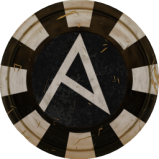
.thumb.png.ce58cea22940c255f5b0a735d5abee36.png)

